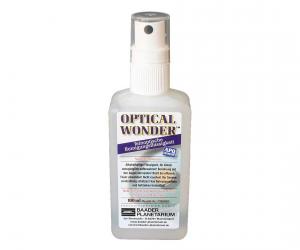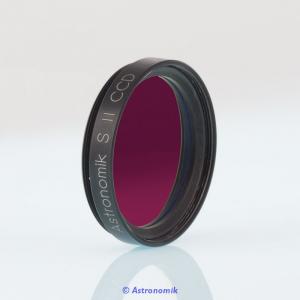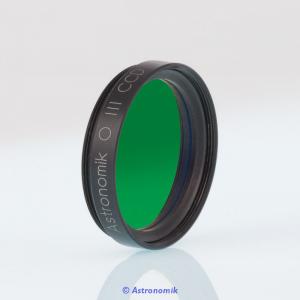- Telescopes
- Overview:
Telescopes - Achromatic Refractor
- Apochromatic Refractor
- Overview:
Apochromatic Refractor - ED Refractor - less color aberration than an achromatic
- SD APO - color free 2-element APO objective
- EDT APO - 3 element ED objective
- High End APO with 3-element APO objective - no color aberation
- Flatfield APO with flat field for Astrophotography
- All Apos and EDs from all manufacturers - large overview
- TS APO and ED from Japan with high quality optics
- Overview:
- Newtonian Telescopes
- Dobsonian Telescopes
- RC Ritchey Chretien Telescopes
- Casssegrain Telescopes
- Reflektor Telescopce with Lens Correcture
- Maksutov Cassegrain Telescopes
- GoTo Telescopes
- Solar Telescopes H-Alpha
- Overview:
- Mounts Tripods Rings Rails Power Supply ...
- Overview:
Mounts Tripods Rings Rails Power Supply ... - Mounts Equatorial with GoTo
- Mounts Equatorial without GoTo
- Mounts Azimutal with GoTo
- Mounts Azimutal without GoTo
- Mounts GoTo - Harmonic Drive
- Travel mounts for astro imaging
- Tripods Piers Polar Wedges
- Mount Control & Electronics
- Dovetail Clamps, Plates and Mount Adapters
- Tube Rings
- Power Supply
- Counterweights Balance Weights
- Mount Accessories - Other
- Overview:
- Telescope Accessories
- Overview:
Telescope Accessories - Eyepieces
- Barlows & Reducer Lenses
- Diagonal Mirrors and Prisms
- Binocular Viewers
- Finder Scopes
- Telescope Collimation and Test
- Cleaning Tools
- Transport and Storage
- Dust protection for Telescopes & Accessories
- Stray Light Protection
- Dewcaps and Heater
- Focusers, Adapters, Motorfocus
- Telescope DIY & Improvement
- Other telescope accessories
- Replacement Parts
- Overview:
- Filters
- Overview:
Filters - Color Filters and Color Filtersets
- Nebular Filters for Visual Observing
- Neutral-Density and Polfilter
- Photo Narrowband Nebular Filters
- Photo Broadband Filters
- Photo Planetary Filters
- Photo R-G-B and IR Cut Filters
- Photo - Filtersets
- Photometric Filters
- Clip Filter for DSLR Cameras
- Filter Wheels and Filterslider
- Solar Filters for white light
- Solarfilter for H-Alpha and Calcium
- Overview:
- Adaptors
- Overview:
Adaptors - Adapter 1,25" and 24,5mm
- Adapter 2"
- Adapter T2 - M42x0.75
- Adapter M48x0,75
- Adapter M54
- Adapter SC
- Adapter M63
- Adapter M68
- Adapter to other Threads
- Adapter Extensions
- Adapter camera bayonet
- Adapter Objective Filterthread
- Adapter Quick Changing , Rotation
- Adapter Eyepiece Projection
- Adapters Tilting
- Overview:
- Astrophotography and Photography
- Overview:
Astrophotography and Photography - Cooled Cameras
- Cameras without Cooling
- Deep-Sky Cameras uncooled
- Set-Offers Camera, Filter, Wheels
- Acessories for Cameras
- Travel mounts for astro imaging
- Imaging Correctors for Telescopes
- Autoguiding Cameras & Sets
- Everything for Guiding
- Focusing aids - Bahtinov mascs
- Flat Field foils and boxes
- Lenses for Cameras
- Piggyback Camera Holder
- Camera Bags, Photocases & more
- Digital Camera and Smartphone Adapter
- Other photo accessories
- Overview:
- Binoculars, Spotting Scopes, Microscopes, Range Finders
- Overview:
Binoculars, Spotting Scopes, Microscopes, Range Finders - Spotting Scopes and Acessories
- Roof Prism Binoculars
- Binoculars with Porro prisms
- Binoculars from 100mm Aperture
- Binoculars with 1,25 inch eyepieces
- TSMX APO Binoculars
- Binoculars for Astronomy
- Binoculars Hiking Bird watching
- Monoculars - Opera Binoculars
- Accessories for Binoculars
- Range Finders
- Microscopy
- Bags for Phototripods & Binoculars
- Overview:
- Phototripods and Binomounts
- Books, Software
- Overview:
Books, Software - Books for Astronomy Beginners
- Star Charts and Planispheres
- Books about our Solar System
- Observing Tips for Amateurs
- Popular Astronomy Literature
- Teaching material
- Astrophotography books
- Telescopes, Observatories, Construction
- Calendars Yearbooks
- Software, Star Charts
- Books for Microscopers
- Books Nature and Animals
- Nature Photography TimeLapse
- Overview:
- Night Vision, Magnifiers, Weather, Domes & more
- Beginner Astronomy and Gift Ideas
- Second Hand & Special Offers
- New products
Manufacturer: Astronomik Filter
Product number: 8h0050
EUR139.00new
EUR 139,00
incl. 19 % VAT (DE)
The VAT indicated refers to that applicable in Germany. After logging in, the VAT amount is adjusted to the applicable VAT of the stored delivery country. Therefore, the final price may vary accordingly.
excl. 6.95 € shipping costs (DE)
more details to the shipping costs ...Please log in to calculate shipping costs to your country.
There are no reviews for this product
- Details..
- Technical data..
- In the box..
- Reviews..
- Manufacturer infos..
- Safety informations..
This filter is suitable for photography of hydrogen nebulae from artificial light polluted areas, but also from places with dark skies. The contrasts between objects shining in H-alpha light and the sky background are extremely enhanced.
The H-alpha filter increases the contrast between hydrogen nebulae and the sky background. Due to the narrow half-width combined with high transmission in the H-alpha line region, the filter achieves a greater contrast enhancement than wider band filters. The half-width of 12 nm is optimally matched to the use of common CCD and CMOS sensors. The half-width makes it possible to use fast optics. In addition, the filter has a transmission of almost 100%, which cannot be achieved with narrower-band filters.
Even in the big city, shots with cooled cameras are usually limited by the dark current. Therefore, further suppression of the sky background by lower half-widths does not reveal more details in the object. Compared to very narrowband filters, the H-alpha 12nm filter then has the advantage that you can usually find tracking stars for almost all cameras with a built-in tracking sensor.
An example of an image taken from the outskirts of a large city (Munich) can be found under the field reports.
The useful range of application extends over a focal ratio of 1:2.0 to 1:30 for lenses and telescopes of all diameters.
Tips and further usage notes: With H-alpha- OIII- and SII-filters you can create three-color images of emission line objects even from locations with very strong light pollution, as it is known e.g. from images of the Hubble Space Telescope. In this case, a CLS CCD filter can be used to capture the luminance channel. Achromatic refractors show relatively large stars due to the residual color error. If you use line filters like the ASHA12nm, the stars will be much smaller on the images. Astronomik H-alpha filters are not suitable for solar observation!
Alternatives:
The 6-nm H-alpha filter is interesting when objects in very starry areas of the sky are to be imaged with short focal lengths. The number of stars in the image is typically halved.
Suitability of the filter: Visual Observation (Land): Unsuitable Visual observation (city): Unsuitable Conventional film: Neutral, but very long exposure times CCD and CMOS astrophotography: Very good, extreme contrast gain for H II emission nebulae DSLR astrophotography (unmodified): Good, but much lower sensitivity in H-alpha than modified cameras. DSLR astrophotography (astromodified): Very good, extreme contrast gain in H II emission nebulae. DSLR astrophotography (modified with MC clear glass): Very good, extreme contrast gain with H II emission nebulae. Webcam / Video (planets): Unsuitable Webcam / Video (Deep Sky): Good, good contrast gain for bright objects
Technical data of the filter: Transmission of over 97% at the H-alpha line (656 nm). HWB 12 nm complete blocking of all interfering wavelength ranges up to infrared Homofocal with all other Astronomik filters Thickness of the filter: 1 mm Not sensitive to moisture, not aging, scratch resistant Fine optical polished substrate material The filter is supplied in durable packaging
The transmission curve:
[[kein Bild]]
On the horizontal axis, the wavelength is plotted in nanometers. 400 nm corresponds to deep blue, at 520 nm the human eye sees green, at 600 nm red. At 656 nm is the well-known "H-alpha" emission line of hydrogen The transmission in % is plotted on the vertical axis. The red line shows the transmission of the filter. Visual filters: The gray curve in the background shows the relative sensitivity of the night-adapted human eye. The sensitivity maximum is at 510 nm and falls symmetrically to the short and long wavelength regions. It can be seen that the night-adapted human eye cannot perceive any radiation in the H-alpha line at 656 nm, the sensitivity is 0%! Photographic filters: The gray curve in the background shows the relative sensitivity curve of a typical astro camera sensor. In orange are shown the most important emission lines contributing to artificial sky brightening. These are the lines of mercury (Hg) and sodium (Na) used in most streetlights and neon signs. The main emission lines of gas nebulae are shown in green. These are the lines of hydrogen (H-alpha and H-beta) and the lines of doubly ionized oxygen ([O III]) and singly ionized sulfur ([S II]). The square brackets indicate that these are forbidden lines.
The H-alpha filter increases the contrast between hydrogen nebulae and the sky background. Due to the narrow half-width combined with high transmission in the H-alpha line region, the filter achieves a greater contrast enhancement than wider band filters. The half-width of 12 nm is optimally matched to the use of common CCD and CMOS sensors. The half-width makes it possible to use fast optics. In addition, the filter has a transmission of almost 100%, which cannot be achieved with narrower-band filters.
Even in the big city, shots with cooled cameras are usually limited by the dark current. Therefore, further suppression of the sky background by lower half-widths does not reveal more details in the object. Compared to very narrowband filters, the H-alpha 12nm filter then has the advantage that you can usually find tracking stars for almost all cameras with a built-in tracking sensor.
An example of an image taken from the outskirts of a large city (Munich) can be found under the field reports.
The useful range of application extends over a focal ratio of 1:2.0 to 1:30 for lenses and telescopes of all diameters.
Tips and further usage notes:
Alternatives:
The 6-nm H-alpha filter is interesting when objects in very starry areas of the sky are to be imaged with short focal lengths. The number of stars in the image is typically halved.
Suitability of the filter:
Technical data of the filter:
The transmission curve:
[[kein Bild]]
| Transmission at the H-alpha line (656 nm): | over 97% |
| FWHM: | 12 nm |
| Carrier material: | optically polished substrate |
| Glass thickness: | 1 mm |
| Parfocal: | with other Astronomik filters |
| Anti reflective coating: | completely resistant against high humidity, scratches and aging effects |
| Material of cell: | aluminium |
Image (c) by Wolfgang Ransburg
Location: Munich east
Instrument: William Fluorstar 110 Refractor
Camera: Artemis 4021
Filter: Astronomik H-Alpha 12 nm

| Manufacturer / Importeur: | Vesting e.K. |
| Street: | Storchenweg 6 |
| ZIP / City: | 21217 Seevetal |
| Country: | Germany |
| Telefon number: | +49 40 5114348 |
| Email: | astro@astro-shop.com |
| Website: | www.astro-shop.com |
Safety informations: PDF Download
Recommended accessories
Cleaning & Collimating
TS-Optics Optical Super Microfiber Cleaning Cloth
EUR 4,99RRP EUR 7,95you save 37.2% (EUR 2,96)
Eyepiece-side accessories like Filters
Reviews














